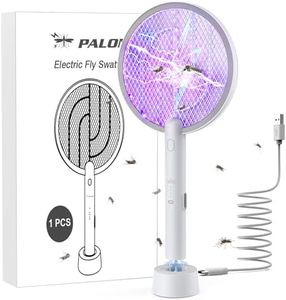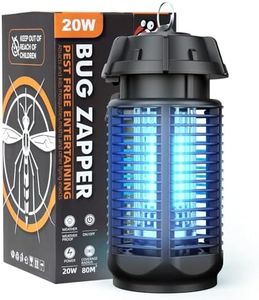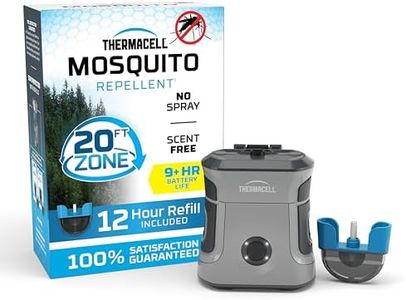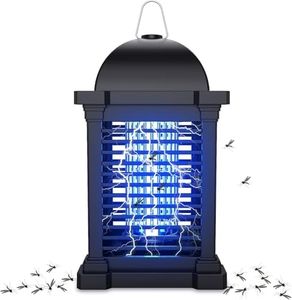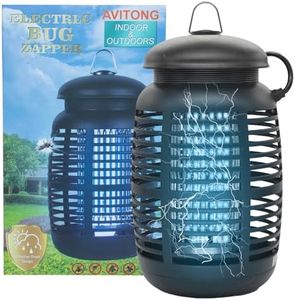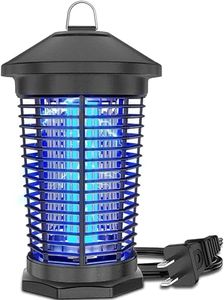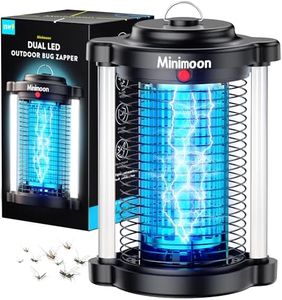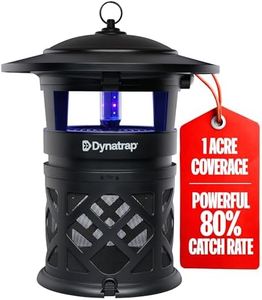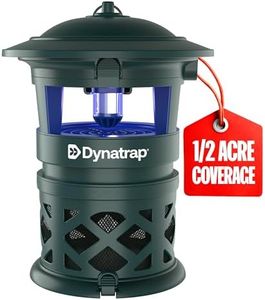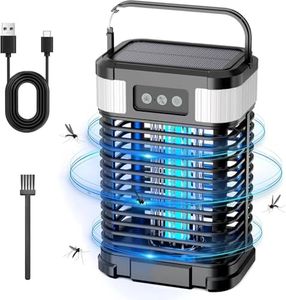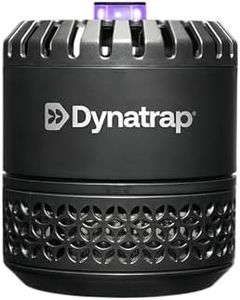We Use CookiesWe use cookies to enhance the security, performance,
functionality and for analytical and promotional activities. By continuing to browse this site you
are agreeing to our privacy policy
10 Best Mosquito Zappers
From leading brands and best sellers available on the web.Buying Guide for the Best Mosquito Zappers
Choosing the right mosquito zapper can make outdoor evenings much more comfortable and help protect your household from annoying insect bites. The ideal zapper not only attracts and eliminates mosquitoes efficiently but also suits your environment and is easy to use. By understanding a few key features, you can select a zapper that matches your needs without getting overwhelmed by marketing terms or confusing ratings.Coverage AreaCoverage area tells you how much space the mosquito zapper can effectively protect, measured in square feet or meters. This is important because a zapper that’s too small for your intended area won’t do a good job, while using a too-powerful device for a small area may be unnecessary. For small patios and balconies, a zapper designed for smaller areas (up to 500 square feet) might be enough, but for larger gardens or big rooms, you’ll need a zapper rated for 1,000 square feet or more. Always consider where you plan to use it most and match the coverage accordingly so you get the best protection.
Type of AttractantMosquito zappers use different methods to lure mosquitoes, such as UV light, carbon dioxide (CO2), heat, or even scents. UV light zappers are common and effective for night use, while CO2 or heat-based attractants may be needed if you want to mimic human presence (especially for day-active mosquitoes or heavily infested areas). If you’re primarily indoors or just need light control, a basic UV zapper might work, but if your needs are greater—like for outdoor gatherings or high mosquito traffic—look for zappers that combine more than one attractant.
Power SourceThis spec describes how the zapper is powered—either by plugging into an electrical outlet, running on batteries, or even being solar-powered. For permanent placement or larger units, corded electric options offer continuous operation. Battery-operated or solar-powered zappers are more portable and convenient for camping or temporary setups. Choose a power source that matches your intended location and how often you’ll need to move or recharge the device.
Safety FeaturesSafety features reduce the risk of accidental contact with the electrified grid or exposure to chemicals. Common features include protective cages, child-proof switches, and other designs that keep curious fingers or pets safe. If your zapper will be used around children or pets, prioritize models with extra safety throttles and strong barriers between the user and the zapper’s active parts.
Ease of CleaningThis describes how simple it is to remove dead insects and maintain the zapper. Some models feature removable trays or easy-access grids that help you clean up quickly and efficiently. If you don’t want a lot of fuss or mess, look for models advertised as easy to clean, and consider how often you’ll realistically want to be emptying or wiping down the device based on your use pattern.
Indoor vs Outdoor UseSome mosquito zappers are designed specifically for indoor use, others for outdoor, and some can do both. Features such as weatherproofing, UV resistance, and cord length may vary depending on the intended environment. For indoor use, quieter and odor-free models are ideal, while outdoors, you might want a more rugged, larger zapper with weather protection. Always check this specification to ensure compatibility with where you want to place your zapper.
